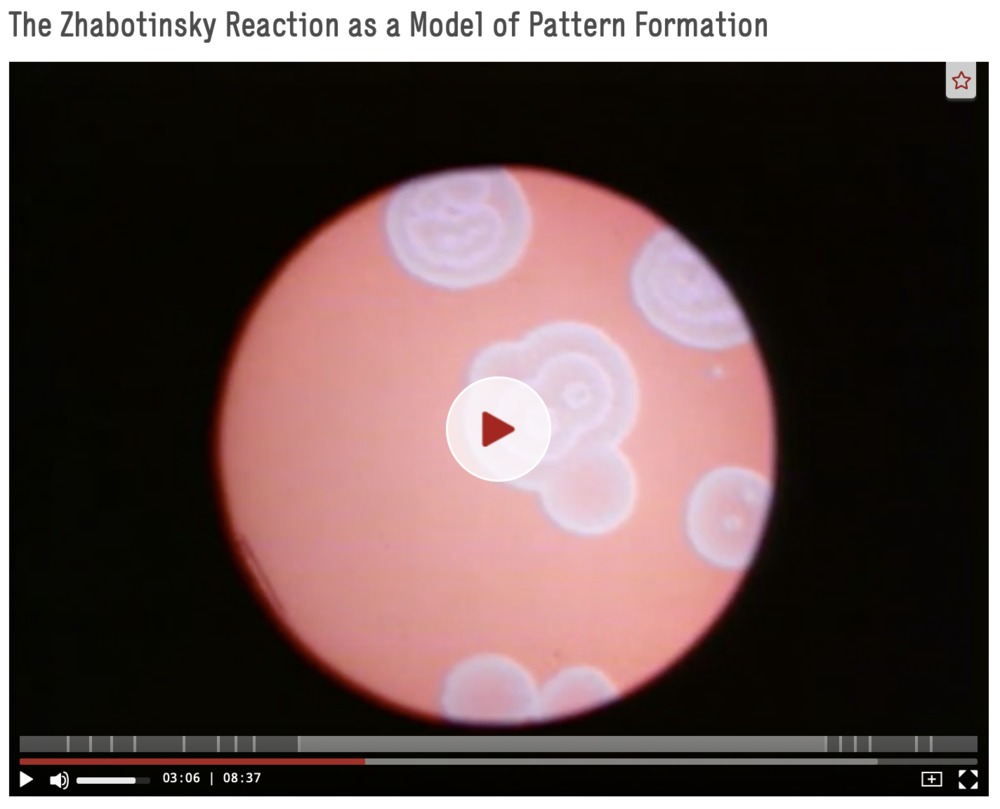Youtube videos about reactions
"The Zhabotinsky Reaction as a Model of Pattern Formation" published on TIB AV-Portal (8:37 min) recorded in 1980 (DOI: 10.3203/IWF/C-1473eng).
"Die Zhabotinsky-Reaktion als Modell einer Musterbildung" published on TIB AV-Portal (8:37 min) recorded in 1980 (DOI: 10.3203/IWF/C-1473).
Abstract: Dissipative patterns form in originally simple chemical compounds. Starting from pacesetting centers, chemicalwaves of a redox reaction are transmitted. This can be seen in the change in color of a redox catalyst. The decarboxylation of malonic acid drives the total reaction. Pattern formation in the aggregation of Dictyostelium proceeds analagously (film/photos in cooperation with G. Gerisch, 1963).
Nice description of the preparation (do not do what you see at 0:38!) and spatial patterns in a Petri dish.
The related PDF file contains explanations and a easy-to-follow recipe with four stocksolutions.
Briggs-Rauscher Chemical Oscillation (on Youtube):
Part of "Steven Strogatz - Nonlinear Dynamics and Chaos" (Part 4) in 2008 with Irving Epstein, Chemistry Dept., Brandeis University explaining the Briggs-Rauscher reaction.
A nice 13 minute documentary on the BZ reaction and its history (on Youtube):
Created as a student projects in Joe Alia's Physical Chemistry 2 at the University of Minnesota at Morris in 2012. Produced by Matt Lovander (chemistry major) , Lewis Owen (CS major), and Alex Weber (physics major); narration by Professor James Togeas (quote from Matt Lovander: "we thought he would provide a smooth tempoed delivery of our script"). Matt Lovander went on to graduate school in Analytical Electrochemistry at the University of Iowa.
A set of 8 videos explaining "Pattern formation in nature" implemented in the excellent website "Mathematics of patterns" at Princeton University created by Yayoi Teramoto Kimura (on Youtube).
At was an undergraduate entry for the DSWeb2013 Contest for Teaching Dynamical Systems, and was also a portion of the author's independent work for the Certificate program of the Program in Applied and Computational Mathematics at Princeton.
Related to the BZ spiral: A human spiral with aobut 550 Georgia Tech students in 2014 (on Youtube):

